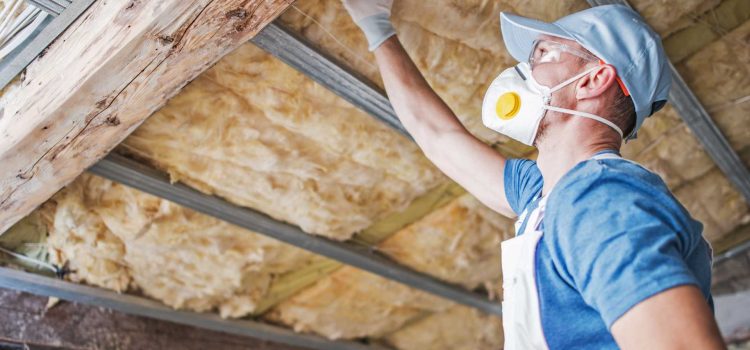
Introduction: The Invisible Hardest Worker in Your Home
Every homeowner has experienced it. It is that persistent chill from a drafty wall on a cold winter day. It is the second-floor bedroom that turns into a sauna during a summer heatwave. The usual suspects like old windows and doors often take the blame for this discomfort. The real culprit, however, is frequently the one you cannot see. Most people think of insulation as just “that fluffy stuff” in the attic. They see it as a passive building material installed during construction and then forgotten. This common view misses the mark completely. Insulation is one of the most critical, high-performance systems in a home. Understanding the basics is not just for contractors. It is essential knowledge for any homeowner who wants a more comfortable, energy-efficient, and durable home. A qualified insulation company does not just install a product; it installs a complete system for comfort and protection.
What is Insulation and Why Does It Matter? The Simple Science of Comfort
The fundamental purpose of insulation is simple. It does not “create” heat or cold. Its job is to slow down or resist the movement of heat. A simple analogy is to think of insulation as a thermal coffee mug for your house. In the winter, it works to keep the precious heat produced by your furnace inside your home. In the summer, it does the opposite, working to keep the intense heat from the sun out. This resistance to heat flow is what creates a stable and comfortable indoor environment year-round. It is the key to eliminating those frustrating hot and cold spots that make certain rooms unpleasant to be in depending on the season.
This function provides three major benefits. The first and most obvious is comfort. A well-insulated home has more consistent and even temperatures from room to room and from floor to floor. The second benefit is energy efficiency. By dramatically slowing down heat transfer, insulation means your furnace and air conditioner do not have to work as hard or as often. This directly translates into lower monthly utility bills, offering a significant return on investment over time. The third, and perhaps most overlooked, benefit is moisture control. Proper insulation helps prevent the formation of condensation on interior walls and ceilings, which is a primary cause of mould, mildew, and structural rot.
The Language of Insulation: Understanding R-Value
When discussing insulation, the most important term to understand is “R-value.” In simple terms, R-value is a rating of a material’s thermal resistance. The higher the R-value, the better the material’s ability to resist the flow of heat and, therefore, the better it insulates a space. This number allows you to directly compare the performance of different insulation products. For example, a standard fibreglass batt insulation might have an R-value of around 3.5 per inch of thickness, while a high-performance spray foam could have an R-value closer to 7 per inch. It is a straightforward measure of insulating power.
A crucial concept to grasp is that R-values are cumulative. The total thermal resistance of a space is the sum of the R-values of all the materials combined. If your attic has old insulation with a value of R-20 and you add new insulation with a value of R-30 on top, the total R-value for that space is now R-50. This is why “topping up” existing attic insulation is such a popular and effective energy-saving upgrade. For context, building codes in Canada recommend specific R-value targets for our colder climate. Generally, this means aiming for R-50 to R-60 in attics, R-20 or more in exterior walls, and R-12 or more for basement walls to ensure your home is efficiently protected.
The Anatomy of an Insulated Home: Where It Needs to Go
To understand where insulation is most needed, it helps to know where a home loses the most energy. The number one priority in most Canadian homes is the attic. Because heat naturally rises, an under-insulated attic acts like a massive, open chimney. It allows the warm air you are paying to heat to escape directly into the atmosphere. This “chimney effect” puts a constant strain on your furnace and is the single biggest source of heat loss in most homes. It is essential to have a thick, continuous blanket of insulation covering the entire floor of the attic to cap this thermal escape route.
The next most critical areas are the exterior walls and the basement. The walls form the primary “thermal envelope” of your home’s living space. Many older homes, especially those built before the 1980s, often have very little or even no insulation within the wall cavities, leading to cold walls and persistent drafts. Just as heat escapes through the attic, cold can seep into the home from the ground up. An uninsulated basement or crawlspace allows the chill from the earth to radiate into your home, resulting in cold floors on the main level. A particularly notorious spot for air leakage and heat loss is the rim joist—the wooden band that sits right on top of the concrete foundation wall.
A Quick Guide to Common Insulation Types
Homeowners will typically encounter three main types of insulation. The most familiar is fibreglass batts, which come in the form of pink or yellow rolls or pre-cut blankets. This type of insulation is best suited for spaces with standard and regular framing, such as the open wall studs in new construction or the ceiling joists in an unfinished basement. It is a cost-effective solution for these straightforward applications. The second common type is blown-in or loose-fill insulation, which is usually made of fibreglass or cellulose. This fluffy material is blown into place with a large hose, making it the ideal choice for topping up existing attic insulation. It is excellent at filling in the irregular gaps and spaces around roof trusses and wiring, creating a seamless thermal blanket.
The third type is spray foam insulation, a premium product that offers superior performance. This polyurethane material is sprayed as a liquid and rapidly expands into a solid foam, filling every crack and gap as it cures. Its major advantage is that it insulates and air-seals in a single step, creating a monolithic, airtight barrier that is far better at stopping drafts than any other insulation type. While it has a higher upfront cost, spray foam is exceptionally effective for sealing complex and problematic areas like basement rim joists or cathedral ceilings, where achieving a perfect air seal is critical for maximizing energy efficiency.
Is Your Home Under-Insulated? The Telltale Signs
Identifying an under-insulated home is often easier than you might think. There are several telltale signs that your home’s thermal protection is not up to par. The most obvious symptom is consistently high energy bills. If your heating and cooling costs seem unusually high compared to similar homes in your area, poor insulation is a likely culprit. Another common sign is inconsistent temperatures throughout the house. If you notice significant temperature differences between rooms or between the main floor and the second floor, it is a strong indicator that heat is not being contained effectively. Cold drafts near walls, floors, or electrical outlets are also a clear sign of air leakage through an under-insulated thermal envelope.
One of the most definitive signs of an under-insulated attic in a Canadian winter is the formation of ice dams. These are large buildups of ice that form at the edge of the roof. They are caused by heat escaping from the living space into the attic, which melts the snow on the roof from below. This water then runs down the roof and refreezes when it hits the cold eaves, creating a “dam” that can cause significant water damage. Finally, the simplest diagnostic test of all is a quick visual check. If you peek into your attic and can easily see the tops of your ceiling joists, your home is almost certainly under-insulated and is losing money through its roof every day.
Your Comfort Blanket and Your Piggy Bank
In the end, home insulation should be viewed as one of the smartest investments a homeowner can make. It is not just a simple building material; it is a fundamental, hard-working system that delivers powerful returns for the entire life of the home. A well-insulated house is more comfortable year-round, it is quieter and more peaceful, and it is better protected from the long-term structural threats of moisture and mould. Most importantly, it is a one-time upgrade that provides a continuous and significant return in the form of lower energy bills. It is a project that benefits both your comfort and your wallet. The first step is simple. This weekend, take a peek into your attic. What you see—or do not see—could be the first clue to creating a more comfortable and cost-effective home.














